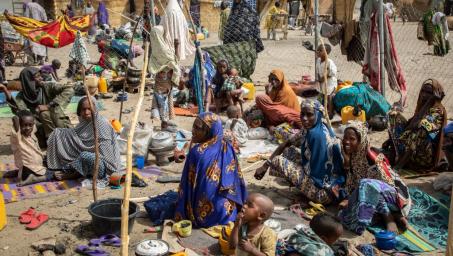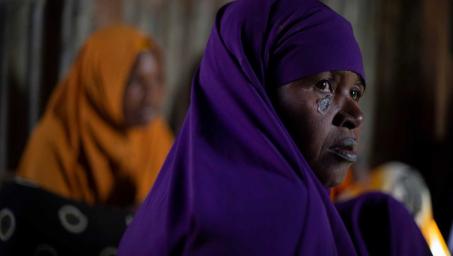Turning the Tide on Internal Displacement: A development approach to solutions
Published on 02 November 2022
Overview
Our world is facing a global crisis of internal displacement with over 100 million people forced to flee from their homes in 2022; a majority displaced by conflict, violence or disasters and trapped within their own countries, often for years or decades. Internally displaced persons (IDPs) struggle without adequate access to basic services, social protection, and decent work. Marginalization of IDPs hinders long-term peace, stability, and recovery, and constitutes a major obstacle to achieving the Sustainable Development Goals (SDGs).
UNDP’s flagship report ‘Turning the Tide on Internal Displacement: A development approach to solutions’, produced with the collaboration of the Internal Displacement Monitoring Centre (IDMC), offers insights into the scale and impact of this challenge. It places a renewed emphasis on development as the only way to provide sustainable solutions to internal displacement and build pathways towards peace and stability.
This insights page presents the analytical foundation of the report. Users can interact with the analysis of key socio-economic impacts for people both internally displaced and from within host communities – across Colombia, Ethiopia, Indonesia, Nepal, Nigeria, Papua New Guinea, Somalia and Vanuatu.
Assessing the impact of displacement on IDPs and hosts communities
The total number of internally displaced persons (IDPs) around the world was at 59 million people in 2021, the highest point recorded and more than double the number of IDPs documented 10 years ago. This number is expected to continue rising in a world characterized by systemic risks and polycrisis. The crises are not only increasing the number of IDPs, but also the duration of their displacement. As such, it is urgent to better understand displacement consequences on IDP and host communities.
In 2020, at the peak of COVID-19, 30.7 million new displacements due to disasters were recorded, the highest number in the last decade. We also saw cascading effects in 2021 with a record number of 14.4 million new displacements due to conflicts and violence.
INTERNAL DISPLACEMENTS
Bridging the Gap
While global figures provide the extent of the problem and the burden on overstretched humanitarian resources and fragile national economies, there is a more urgent gap in our knowledge of internal displacement. This gap is around the scale, types, and impact of internal displacement on the individual, household, the displaced communities of origin, and the lives and futures of host communities. Many IDPs are still unrecorded by their governments and knowledge gaps on age, sex, number and duration of displacement, access to basic services, security, decent housing, and livelihoods of IDPs and members of affected communities prevent authorities from assessing needs accurately and responding to them adequately.
Composition of survey respondents
This analysis starts to piece together the impact and potential policies to support IDP beyond humanitarian support. It analyzes data collected by the IDMC between January 2021 and January 2022 from 2,653 individuals – 1,350 internally displaced individuals and 1,303 people from within the host communities – across globally dispersed eight countries. The sample size, while relatively small, provides a starting point to understand progress in reaching different development outcomes based only on the households sampled. While effort was made for the sample to be representative, the representativeness does not capture the entire population of IDPs or hosts in each country.









